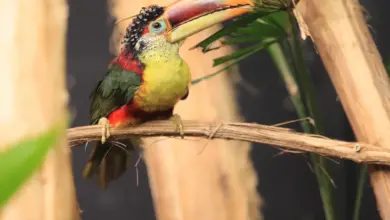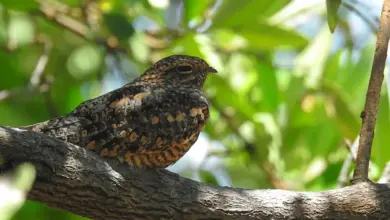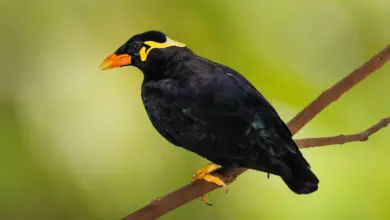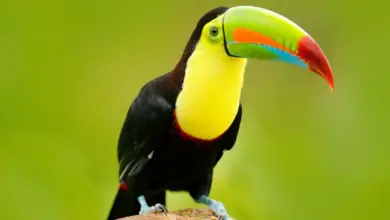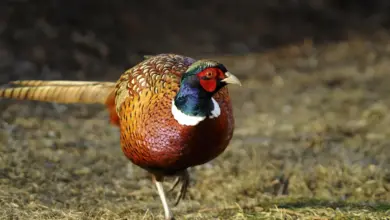The Choco Toucans (Ramphastos brevis) are South American toucans that occur naturally in the humid lowland and foothill forests on the Pacific slope of western Colombia and western Ecuador. Its natural range is estimated to be over 110,000km²
Despite extensive habitat destruction within part of its natural range, the Choco Toucan remains relatively common.
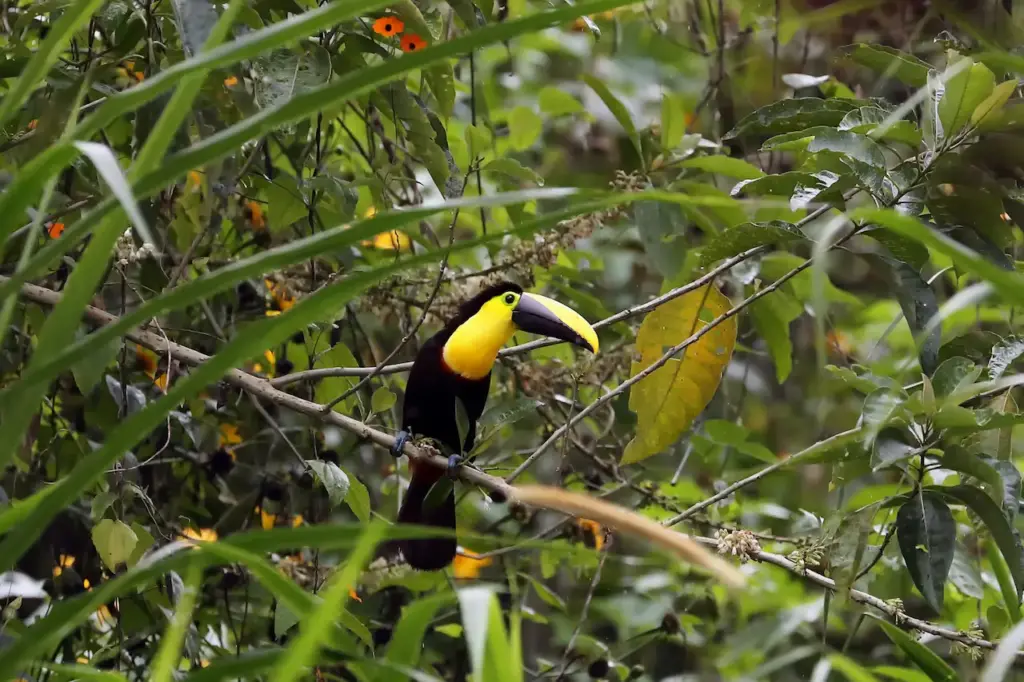
Description
Choco Toucans are quite large with a predominantly black plumage and a striking yellow and black bill, a yellow bib, white uppertail feathers, red undertail feathers and green ocular skin (ring around the eyes).
Similar Species: The Choco Toucan resembles the larger Chestnut-mandibled Toucan, but lacks the brown markings on the bill. Both species are most easily differentiated by their different voices. which are described as croaking in the Choco Toucan and yelping in the Chestnut-mandibled.
Personality
Unlike the popular parrots, captive toucans cannot learn to talk. On the bright side, they are also much quieter. Generally, they are friendly and easily tamed.
They are fairly long-lived with a lifespan around 20 years.
Breeding / Nesting
The mating ritual is a fun-loving affair for toucans, as they throw fruit to one another.
Like all of their other activities, nesting happens high up in hollow areas in trees. The bill is not effective for digging or any other type of extensive excavation work and so they must rely on holes already formed by other means.
Choco Toucans lay 3 – 4 pure white eggs in an unlined nest on a few wood chips created while enlarging the opening or on various kinds of regurgitated seeds collected for this purpose. Parents share equally in incubation duties, but rarely sit on the nest for more than an hour at a time and the eggs are often left uncovered.
After 16 days the nestlings are born blind, with no trace of down on their pink skin. The bill is unremarkable until about 16 days old when it takes on the distinguishing features of the toucan, and requires up to four months to develop fully. Feathers begin to expand at 4 weeks. Both parents share in feeding fruit to the chicks. The young fledge when they are 45 – 50 days old.
Babies have pads on their elbows that protect their feet by keeping them elevated until they fledge.
Breeding in captivity requires attention to a number of details. Even successful breeders report rates as low as 30% for the incubation of eggs.
Captivity
The Choco Toucans are very rare in captivity in the United States.
